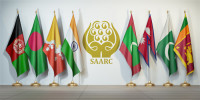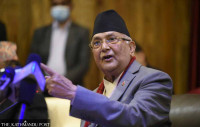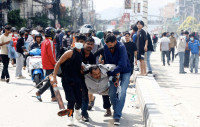Opinion
Peremptory ways
In Nepal, conflict is increasingly being managed through the hegemonic control of public discourse
Deepak Thapa
Apart from changes in the country’s socio-political sphere wrought by the Maoist movement, one other impact of that conflict has been in catapulting Nepal into the international literature dealing with issues such as peace and conflict, state fragility, post-conflict transition, civil-military relations, ethnic studies, and so on. The insurgency and its aftermath sparked the interest of some of the biggest names in these fields, and among them is Johann Galtung, the Norwegian scholar who is best known for having elevated peace and conflict into a major area of study and who has made a number of trips to look into the Nepal case as well.
One of Galtung’s better-known concepts to help understand conflict in human societies is ‘structural violence’. Propounded in 1969, he elucidates it thus: ‘We shall refer to the type of violence where there is an actor that commits the violence as personal or direct, and to violence where there is no such actor as structural or indirect. In both cases individuals may be killed or mutilated, hit or hurt in both senses of these words, and manipulated by means of stick or carrot strategies. But whereas in the first case these consequences can be traced back to concrete persons as actors, in the second case this is no longer meaningful. There may not be any person who directly harms another person in the structure. The violence is built into the structure and shows up as unequal power and consequently as unequal life chances.’
Coming back to the Maoist insurgency, while there exists an influential school of thought in Nepal that fervently believes the whole thing was cooked up by some spooks in New Delhi, most explanations for the rise and rapid spread of the Maoist movement have involved some variation of the ‘structural violence’ theory. And, it is not without reason that the Comprehensive Peace Accord of 2006, the Interim Constitution 2007, the three-year interim plan (2007/08–2009/10) along with various legislations in the immediate aftermath of the 2006 People’s Movement were all geared to diluting the effects of this indirect, but highly iniquitous, violence extant in the everyday lives of many Nepalis.
Illiberal peace
An even earlier contribution of Galtung’s was the idea of ‘positive peace’. Peace as generally conceived, he explains, is ‘a synonym for stability or equilibrium’. And, then, there is peace understood as ‘the absence of organised collective violence, in other words violence between major human groups’, which he calls ‘negative peace’; and ‘positive peace’ wherein peace is used ‘as a synonym for all other good things in the world community, particularly cooperation and integration between human groups, with less emphasis on the absence of violence’.
While one can say with a fair amount of confidence that there is no country in the world that could be firmly bracketed in the ‘positive peace’ category, as an aspirational idea, it is indeed attractive. By the token set out above, the earlier part of the post-2006 era was definitely a move in that direction. The situation has not fully degenerated in Nepal but there is no denying that a number of achievements from that period have since slowly been clawed back.
A recent article by three UK-based academics, David Lewis, John Heathershaw and Nick Megoran, can perhaps shed some light on what is happening in Nepal. Entitled ‘Illiberal peace? Authoritarian modes of conflict management’, Lewis et al point out that the focus of conflict management has been extensively on ‘liberal peacebuilding’ with ‘internationally brokered peace negotiations,…internationally monitored elections; a focus on human rights, gender equality and protection for minorities; the promotion of rule of law and Security Sector Reform (SSR)’ with critiques of the same focusing on its being primarily led by the West. The authors write that the reality in many cases following the end of the conflict has been ‘the emergence of a post-war authoritarian political order after an initial negotiated peace’. What is more common in such cases is what they call ‘authoritarian conflict management’ in which the possibility of violent conflict is obviated ‘through the hegemonic control of public discourse, space and economic resources rather than by the liberal model of compromise, negotiation and power-sharing’.
In the context of Nepal, the most relevant has been in the sphere of public discourse. Lewis and his colleagues argue that this model of conflict management ‘coerce or repress alternative sources of information and interpretations of events, and seek to control news dissemination and knowledge production’ (as in the events surrounding 2015 Madhes Movement); and also ‘delegitimise opponents and undermine claims that rebel campaigns are motivated by legitimate grievances…In such situations, not only political opponents, but also non-governmental organisations (NGOs), human rights groups and international organisations are portrayed as antagonistic to the state’ (as in the reaction to the EU election monitoring report).
Socialism plus nationalism
The Foreign Ministry statement on the EU report had a rather extraordinary sentence: ‘It is unfortunate that the report has made unwarranted comments about political issues that have already been settled’ [emphasis added]. Such an assertion from a government run by a party that supposedly swears by Marx’s conception of historical materialism, and the continuous social and political upheaval it presumes is disquieting. For, it surely begs the question how else is Nepal, which has officially been declared to be ‘socialism-oriented’, going to aspire towards a socialist utopia?
An answer can perhaps be found in the nationalism the current government flaunts so proudly. In words that would sound familiar to us in Nepal, American political scientist Peter N. Stearns writes: ‘It is vital to remember that, historically, political nationalism was born on the left, as a challenge to the existing order...Led by figures like Bismarck, conservatives began to realize that nationalism could attract support from groups of people whose self-interest might otherwise incline them to protest the established order….Nationalism became increasingly attractive to politicians bent on affirming existing political institutions…The nationalisms purveyed by systems of mass education thus uniformly stressed loyalty to existing government, pride in real or imagined cultural traditions, and often acceptance of existing social and gender distinctions.’
We can see indications of the role the government would prefer to grant citizens in today’s Nepal. More worrying is the fact that this would be one of the few occasions in the modern era in which a marriage between socialism and nationalism has been attempted. The most famous union between the two had resulted in National Socialism in Germany, and untold misery on the world. Granted that the Nazis’ view of socialism stood in contrast to that espoused by Marxists. But, as philosopher Fredrick Hayek notes, Nazism had deep socialist roots. ‘The doctrines which had guided the ruling elements in Germany for the past generation were opposed not to the socialism in Marxism but to the liberal elements contained in it, its internationalism and its democracy. And as it became increasingly clear that it was just these elements which formed obstacles to the realization of socialism, the socialists of the Left approached more and more to those of the Right.’
In the German idea of the state, Hayek says, ‘the individual has no rights but only duties’. He cites one of the intellectual progenitors of Nazism, Paul Lensch, whom he describes as ‘a member of the Left wing of the social-democratic party’, providing justification for a strong German state and unquestioned subservience to it: ‘[O]ur conceptions of Liberalism, Democracy, and so forth, are derived from the ideas of English Individualism, according to which a state with a weak government is a liberal state, and every restriction upon the freedom of the individual is conceived as the product of autocracy...’
Lensch’s clinching argument certainly resonates strongly in Nepal nowadays.




 8.12°C Kathmandu
8.12°C Kathmandu










